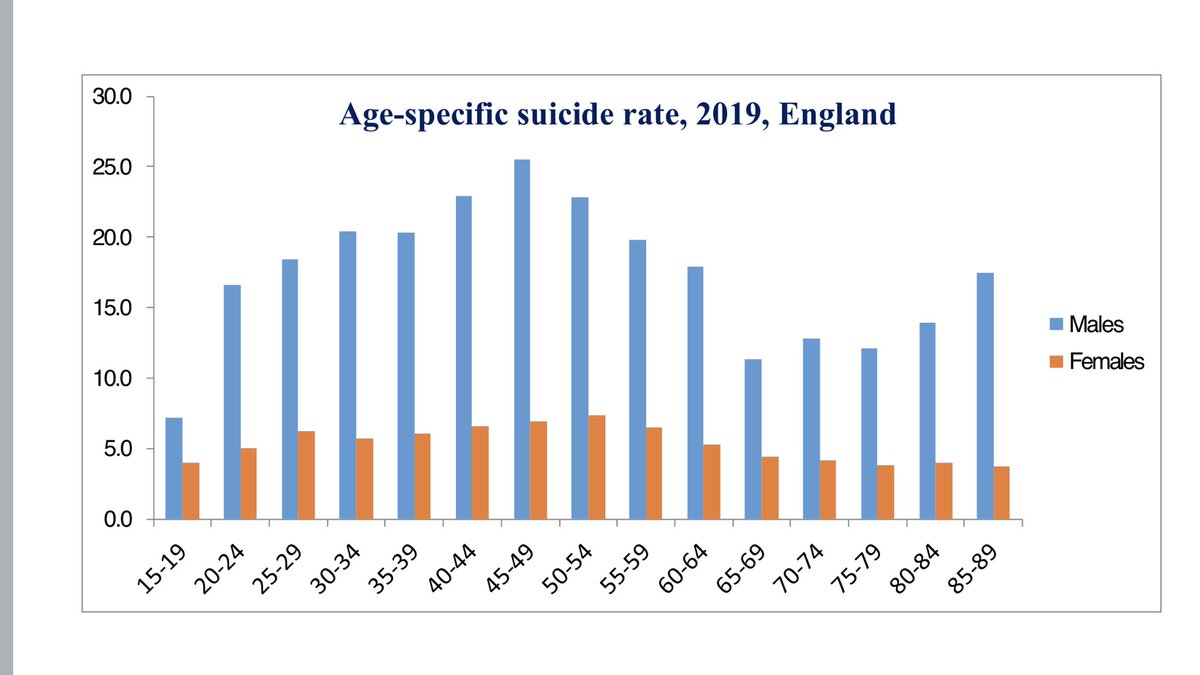
Suicide in several countries, inc England, didn’t rise after lockdown - see @bmj_latest this wk. Yet many studies have shown poorer mental health. How do we square these findings? Answer matters to #SuicidePrevention in next phase of the pandemic. /Thread
bmj.com/content/371/bm…
bmj.com/content/371/bm…
I should stress it’s not unusual for rates of mental ill-health & suicide to diverge. Most surveys of anxiety or depression find higher rates in women but suicide is 3x more common in men. 

It’s not hard to see why the 1st, stricter lockdown impacted on mental health: fear of catching virus, isolation, loss of usual supports, disruption to services, domestic violence, alcohol, trauma & bereavement. An @ONS study found loneliness to be main driver of anxiety. 

Why then hasn’t this translated into higher suicide rates? Word of warning: it could still happen. And of course suicide rates, with over 6000 deaths recorded in UK in 2019, are much too high as it is.
There are several possible explanations.
There are several possible explanations.
It may be that those early lockdown months were a time of social cohesion, of getting through it together, protecting people who were vulnerable. Just as Emile Durkheim, the great sociologist of suicide risk, would have predicted. 

Or perhaps we saw lockdown as terrible but temporary. We were going to get through it. We may have felt anxious but that did not lead to despair - loss of hope is often the final tragic step.
Perhaps for some there was a compensation - additional support from family, friends, neighbours or professionals. Here I should mention the outstanding work of many charities operating helplines. So as well as greater risk there may also have been greater protection.
More difficult to talk about is that the cocooned circumstances of lockdown may have limited access to certain suicide methods. For obvious reasons I won’t spell this out in detail. Except to say that restricting access is one of best evidenced approaches to #suicideprevention.
I also need to stress that our recent figures, showing no rise in suicide (image), cover the overall population. They don’t rule out an increase in certain groups. Some people appear to have had little disruption to their lives while for others it has been a damaging ordeal. 

It may of course be all of these or any combination. Suicide prevention, like suicide itself, rarely comes down to one thing - image shows broad strategy we proposed at 1st lockdown. Crucial question is what can we learn, what should we do, now that 2nd lockdown is upon us? 

We have to rediscover the sense of cohesion that seems to have withered away in an atmosphere of divisive rhetoric & blame. We have to strengthen support for those who may be most distressed & services for those whose mental health is already poor.
We have to ensure that the new lockdown is seen as part of a plan, not a punishment for breaking the rules but a positive step to protect each other, with an end in sight.
And we have to remember lockdown itself may not be biggest threat to #mentalhealth. That may come from the economic fall-out yet to bite its hardest. Recessions raise suicide & econ protections from Govt, employers, welfare & a caring society will be crucial to keeping us safe.
• • •
Missing some Tweet in this thread? You can try to
force a refresh



